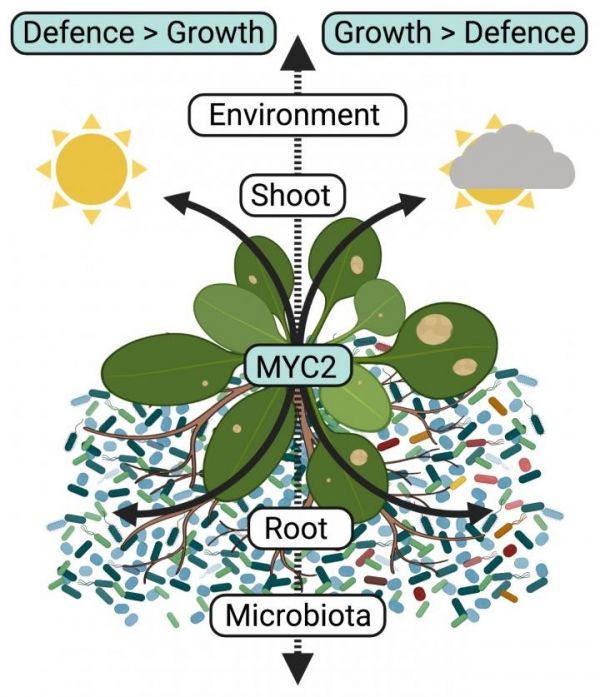Researchers from the Max Planck Institute for Plant Breeding Research (MPIPZ) have discovered that signalling occurring from the response of plant leaves to light, and plant roots to microbes, is integrated along a microbiota-root-shoot axis to boost plant growth when light conditions are suboptimal.
Land plants – plants that live primarily in terrestrial habitats and form vegetation on earth – are anchored to the ground through their roots, and their performance depends on both the belowground soil conditions and the aboveground climate. Plants utilise sunlight to grow through the process of photosynthesis where light energy is converted to chemical energy in chloroplasts, the powerhouses of plant cells. Therefore, the amount and quality of light perceived by chloroplasts through light absorbing pigments, such as chlorophyll, is a defining factor in plant growth and health. A substantial amount of the chemical compounds produced during the conversion of light energy to chemical energy, termed photoassimilates (mainly sugars), is translocated to the plant root compartment and invested in the surrounding soil to sustain microbial growth. Consequently, roots harbour complex microbial communities of bacteria and filamentous eukaryotes (i.e., fungi and oomycetes), and the composition of these communities profoundly influences plant performance. However, the extent to which plants can take advantage of belowground microbes to orchestrate aboveground stress responses remains largely unexplored. Now, in a new study published in Nature Plants, Stéphane Hacquard and his colleagues from the Department of Plant-Microbe Interactions at the MPIPZ in Cologne, Germany, shed light on these aboveground-belowground connections.
Read more at Max Planck Institute for Plant Breeding Research
Image: Priority to microbiota-induced plant growth over defense, under low light conditions. Image created with BioRender. (Credit: Stéphane Hacquard)


